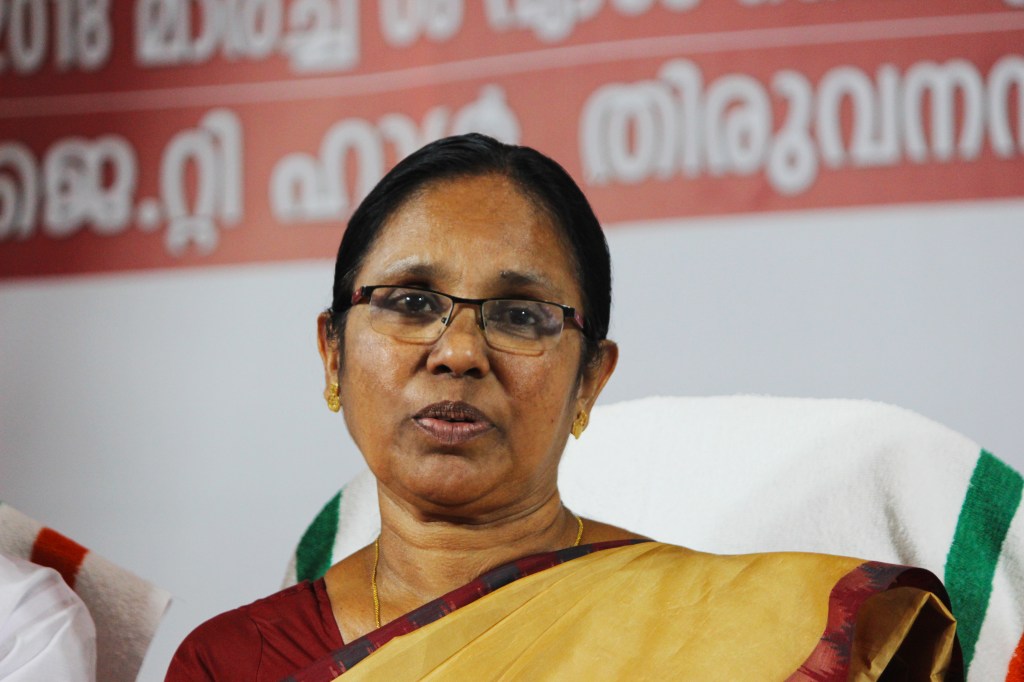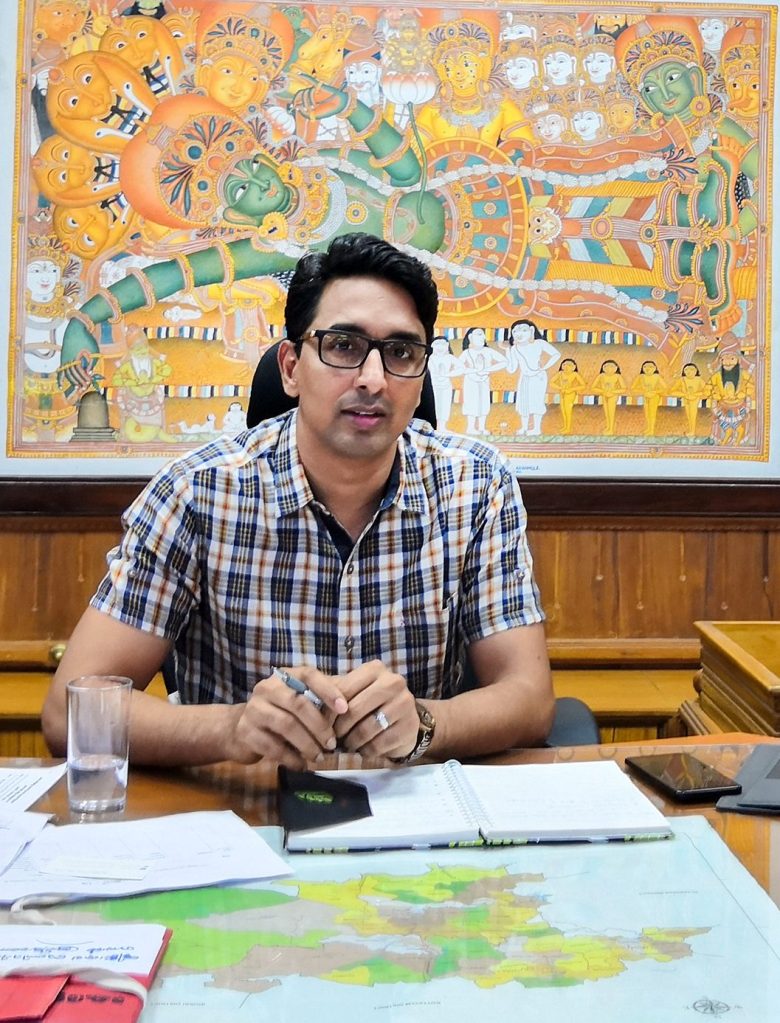You can read our most essential coverage of the coronavirus/covid-19 outbreak for free, and also sign up for our coronavirus newsletter. But please consider subscribing to support our nonprofit journalism.
For some, this wasn’t their first time fighting a deadly epidemic. In 2018, the state had dealt with an outbreak of Nipah, a brain-damaging virus that, like the coronavirus, had originated in bats and transferred to humans. And, as with covid-19, there was no vaccine and no cure. Seventeen people had died, but the World Health Organization (WHO) called Kerala’s handling of the outbreak a “success story” since—despite technical shortfalls—the state’s health system had contained a potential disaster.
This time, though, they would need to go further and move faster.
By 3 a.m. the team had settled on a WHO-recommended plan of contact tracing, isolation, and surveillance. It had been used to limit the spread of Nipah, and on the medical student in January. The plan relied on consulting patients, mapping their movements to see who they’d interacted with, and isolating anyone in the chain with symptoms.
There was, however, one obstacle. The family “weren’t forthcoming,” says Nooh. They were in isolation at the district hospital but didn’t want to declare the full extent of their movements. It was as though they were embarrassed.
At this point, 31 people had tested positive for covid-19 across the country. It was a small number, but the virus was fast-moving—on average, one person was thought to infect two to three others.
This spelled bad news for India. Many of its 1.4 billion residents live in large families and don’t have running water, making it difficult to sanitize things and maintain social distancing. Even countries with advanced health-care systems were being overwhelmed, and India had just 0.5 hospital beds for every 1,000 people—a long way behind Italy, with 3.2 beds per 1,000, and China, with 4.3. In addition, there were only 30,000 to 40,000 ventilators nationwide, while testing kits, personal protective equipment for health-care workers, and oxygen flow masks were also in short supply. It was clear to Nooh and his colleagues: the only way to control transmission was to break the chain.
Detective work
Nooh, who is 40, with a thick head of hair that he combs dutifully to one side, is a soft-spoken man who lives with his wife, a medical student, close to his office. In 2018, when a flood swept through the district and left more than two dozen people dead and 20,000 houses damaged, he had led relief efforts, and got no more than two or three hours of sleep at night. Admirers started a Facebook fan page called Nooh Bro’s Ark.
The experience taught him not just how to manage people in a crisis, but also how to read them. He gauged, correctly, that this family from Ranni would be intractable. So rather than rely on them, he turned to old-style detective work and technology to piece together where they’d been and who they’d come in contact with.
He brought in 50 police officers, paramedics, and volunteers, and split them into teams. Then he sent them out to retrace the family’s movements over that crucial week. They’d given his district officers scraps—an address here, a name there—but Nooh’s task force expanded it dramatically, using GPS data mined from the family’s mobile phones and surveillance footage taken from the airport, streets, and stores.
In a matter of hours they had learned a lot more about the family’s movements than they’d been told—and what they found alarmed them. In the seven days since arriving in Kerala, the family had gone from one densely crowded place to another. They’d visited a bank, a post office, a bakery, a jewelry store, and some hotels. They even went to the police for help with paperwork.
State support
That evening, Kerala’s health minister, KK Shailaja, arrived from the state capital. A former science teacher, she’d already gained a reputation for her prompt and efficient handling of the unfolding crisis: the media had nicknamed her the “Coronavirus Slayer.”
While the rest of India, along with countries such as the UK and the US, wouldn’t take stringent steps to limit movement for another two months, Shailaja had ordered Kerala’s four international airports to start screening passengers in January. All those with symptoms were taken to a government facility, where they were tested and isolated; their samples were flown to the National Institute of Virology 700 miles away. By February, she had a 24-member state response team coordinating with the police and public officials across Kerala.
In the seven days since arriving in Kerala, the family had gone from
one densely crowded place to another.
This was unusual—but Kerala often goes a different route from the rest of India. The small coastal state at the country’s southern tip is steeped in communist ideas and governed by a coalition of communist and left-wing parties.
In recent years, as some states have followed the populist lead of India’s Hindu nationalist prime minister, Narendra Modi, Kerala has maintained its focus on social welfare. Its health-care system is ranked the best in India, with world-class nurses who are headhunted for hospitals in Europe and America; the state’s life expectancy figures are among the highest in the country.
The minister’s arrival in the district reassured Nooh. He wasn’t on his own; the machinery of the entire state was at his disposal. “The seriousness of the government was amazing,” he says. Each team on his task force was increased from six people to 15.

By March 9, around 48 hours after the family tested positive, Nooh’s teams had a map and a flow chart listing each place they had been, when, and for how long. The information was circulated on social media, and people were asked to dial a hotline if it was possible that they had interacted with the family. Nooh’s office was flooded with calls: the family had met with almost 300 people since arriving in town.
Now the teams had to track down these people, gauge their symptoms, and either send them to the district hospital for testing or order them to self-isolate at home. The number of people self-isolating quickly rose to more than 1,200. Still, Nooh knew that people who agreed to self-isolate wouldn’t necessarily do it. So he set up a call center in his office, bringing in more than 60 medical students and staff from the district’s health department, whose job was to call everyone isolating, every day.
The callers ran patients through a questionnaire meant to assess their physical and mental health, but also to catch lies. If anyone was caught sneaking out, “we had the police, the revenue department, and village councils ready to act,” Nooh says. But the carrot was as important as the stick: his office also delivered groceries to those in need.
The district was placed on high alert. Nooh wore a mask, scattered bottles of hand sanitizer around the office, and reverted “to the old model of namaste” rather than shaking hands. This was now ground zero for the covid-19 crisis in India.
Leadership on display
On March 11, the who declared the covid-19 outbreak a pandemic. The next day, India reported its first death. Even so, Modi—perhaps concerned by the impact on the already lackluster economy—refused to issue public advisories and didn’t address the media. His biggest concern seemed to be a plan to redesign the heart of the Indian capital, including parliament, at a cost equal to $2.6 billion.
In Kerala, a different style of leadership was on display. With 15 cases now confirmed across the state, Pinarayi Vijayan, the chief minister, ordered a lockdown, shutting schools, banning large gatherings, and advising against visiting places of worship. He held daily media briefings, got internet service providers to boost capacity to meet the demands of those now working from home, stepped up production of hand sanitizer and face masks, had food delivered to schoolchildren reliant on free meals, and set up a mental health help line. His actions assuaged the public’s fears and built trust.
“There was so much confidence in the state government,” says Latha George Pottenkulam, a clothing designer in the port city of Kochi, “that there was no resistance to modifying one’s behavior by staying in.”
